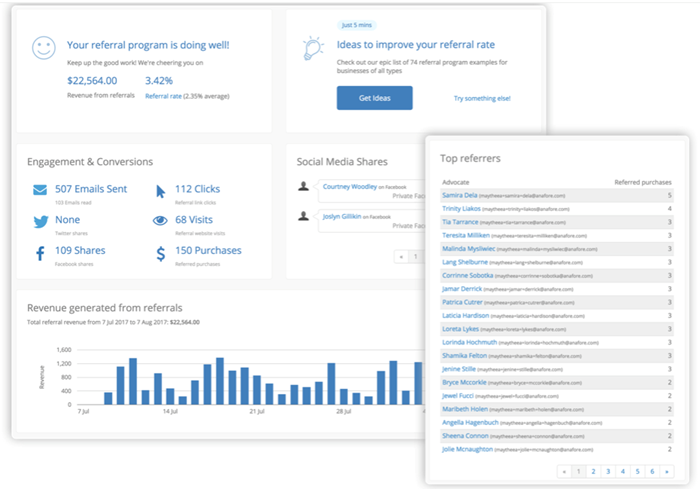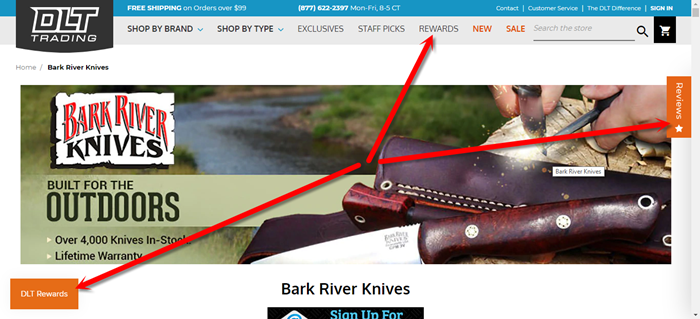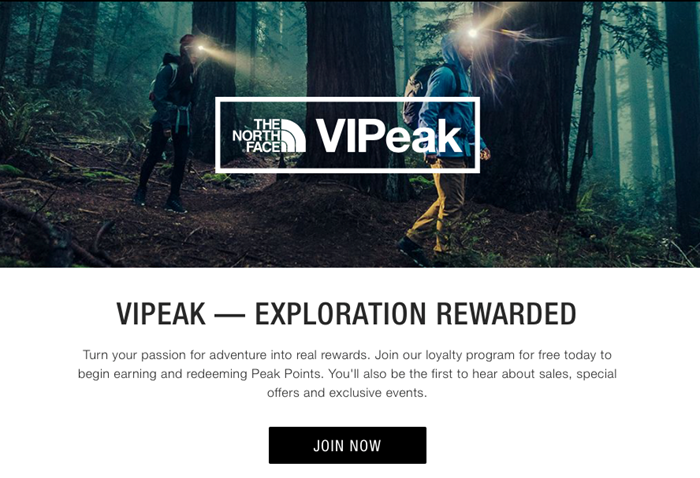Why You Need a Referral Marketing Strategy
Referral marketing doesn't just help you acquire customers, it also increases leads, improves brand awareness and loyalty, and consistently adds to the bottom line, if you get it right.

Honestly, the biggest question here isn’t why, it’s why would you not?
Referral marketing is essentially (free) gold. Also known as word-of-mouth marketing (WOMM), it’s a strategy in which you leverage your existing, satisfied customer base to promote your brand or product.
Think of how many times you’ve had a fantastic meal at a restaurant and raved about it to your friends and family. They then go to this restaurant, love it, and tell their friends and family. You have just provided the best, most cost-effective type of marketing every business owner dreams about.
Sharing a great experience happens organically all the time without the assistance of marketers. However, it is in your best interest to encourage it to happen more.
As Mark Zuckerberg, CEO of Facebook, said: “People influence people. Nothing influences people more than a recommendation from a trusted friend. A trusted referral influences people more than the best broadcast message. A trusted referral is the Holy Grail of advertising.”
Ideally, you’re already sold on referral marketing, but to seal the deal, let’s chat specifically about why it is something you should be actively weaving into your overall marketing strategy.
Increase Your Reach and Up Brand Awareness
Referral marketing works because by nature, people trust the opinions of their friends, family and people they admire or look up to.
So, if you really think about it, you just need to ensure the experience or service you are providing is worthy of a referral. Once you have a thoroughly satisfied customer and they start singing your praises, you can start leveraging an army of connected, low cost promoters to spread your brand’s awareness.
With the rapid advancement of digital and social media in developed as well as emerging markets, we aren’t limited to literal one-on-one communication anymore. The potential reach of a referral or positive review is exponentially greater than it ever has before. Social proof (the influence of actions or attitudes of others on our own behavior) is an extension of WOMM that it just as valuable, as it leverages the need for consensus by favorable reviews or testimonials from other shoppers or influencers.
If you are going to encourage the spread of great reviews (and you 100% should) an incentive structure plays a big role on increasing and scaling referral or social proof activity.
Take Uber as an example, a company that has utilized a referral strategy from the beginning to promote the rapid growth of their brand.
Uber offered a referral incentive to both the referrer and referee to expand their customer base. The genius behind this simple program was that it gave frequent riders ALL the incentive to convert friends and family into customers. When an existing customer successfully referred another person, both participants earned a free ride. It was a perfect, risk-free introduction for the new customer and a direct benefit to the existing customer.

Source
While it may seem like an expensive strategy, quite the opposite is true. Research from Accenture shows that members of loyalty programs spend 12 to 18% more than non-members. This may seem small in isolation, but consider that incremental revenue against the size of a base like Amazon’s Prime membership base (over 100 million members, globally) and you’ll understand why every store cashier tries to push a loyalty membership to you every time you go shopping.
Business Insider reported that millennials these days spend upwards of $100 per month on ridesharing. With Uber’s initial cost of customer acquisition at $40 ($20 to the new rider and $20 to the existing), the original investment was paid back within weeks. The new customers were then incentivized to reach out to their friends to take advantage of another free ride. Then their friends reached out to their friends, and so on and so forth.
At this point, it’s nearly impossible to take advantage of Uber’s referral program because everyone is already using their service.
Uber, like many other businesses, realized that their existing satisfied customers, especially if incentivized, were the key to dramatically expanding their brand awareness by tapping into a targeted audience that was already needing or wanting the service.
By utilizing your customer’s social networks – you can expand your marketing reach while they do most of the legwork for you. Not only that, but happy customers can market to potential leads more effectively because there’s a sense of trust already built into the relationship. A solid referral program will get you one step closer to targeted, credible brand awareness.
Automate to Minimize Costs and Efforts
Set up a referral program that runs on auto mode and fully integrates with your existing business platform.
There are tons of great, inexpensive applications available that specialize in referral marketing. Plug-ins like ReferralCandy are easy-to-use, customizable, and will automatically distribute rewards for ratings or reviews. Not only that, but they will track metrics like referral engagement, revenue, and opportunities for improvement.

Source
To make it even easier, many of these apps can be integrated into existing platforms that service all your business needs from one central portal. Finding a versatile combination of add-ons and ecommerce solutions to accelerate your growth while minimizing complexity will take your business to the next level.
BigCommerce is one such ecommerce solution that integrates a great number of functional apps, especially for referrals, customer service, to help an online store acquire more customers. Cutlery brand DLTtrading.com uses Smile.io to run a rewards program on top of BigCommerce, which gives rewards for simple tasks such as sharing on social media, inviting friends via email, and even signing up.

Source
The ROI, in the words of owner Jason Thurne, is “off the charts!”
Creating an omnichannel and fully-functional approach, with a visually attractive UX (which can increase conversions by up to 400%, according to a Forrester report) streamlines the process, keeps your costs low, and ensures the customer is receiving a cohesive, well-designed experience from start to finish, giving them more reason to purchase and refer friends.
Funnel Customers into a Loyalty Program
Here’s what we’ve learned so far:
Step 1: Offer amazing services or products that are worthy of referrals to turn customers into brand advocates and help you grow brand awareness.
Step 2: Implement a direct referral or social proof program with automated software that is low on effort, high on return, and easily integrates with your existing platform.
Now let’s wrap up this holy trinity with:
Step 3: Increase revenue by rewarding and retaining your most loyal customers.
Loyal customers represent the most engaged, lucrative, frequent buyers in your database and can generate up to 70% of sales over time. Once you’ve successfully impressed or satisfied a customer, the next logical step is to turn them into a loyal, repeat customer.
The easiest way to do this is to roll your referral program into a loyalty program. That way, you’re not only rewarding your customers for referrals, but also building a system that values and recognizes them when they continue to engage with your brand over time.
A successful loyalty program combines unbeatable customer service with exclusive benefits specifically tailored to them. You have the added benefit of being able to gather valuable data to better serve, sell, and personalize their customer experience – keeping them in the family for as long as possible.
The North Face’s VIPeak loyalty program is a fantastic example of the intersection of customer data collection and application to engage known consumers with the brand. VIPeak-ers can earn rewards in the traditional sense by racking up points for purchasing travel gear, or in unique ways, like redeeming points to attend North Face-organized events or go on a climbing adventure in Nepal.

Source
While not all of us are able to afford to send our best customers on a wild outdoor adventure, using your customer data to understand and delight them will give you an edge over the competition and keep customers engaged. An engaged, loyal customer will shop more, spend more, and love your brand more than a new customer.
That’s a Wrap
By strategically weaving a referral program into your overall marketing strategy, you are getting significantly closer to understanding your target audience – because your current customers are literally finding them for you.
Having a solid product or service that organically lends to people talking (positively) about your brand is amazing. But, harnessing and incentivizing that base is the key to exponentially expanding brand awareness and recall. Once you’ve gotten the ball rolling, make sure you have the functional capabilities to manage customer relationships well. The goal is to expand your customer base while retaining the valuable, loyal ones who already trust your brand.